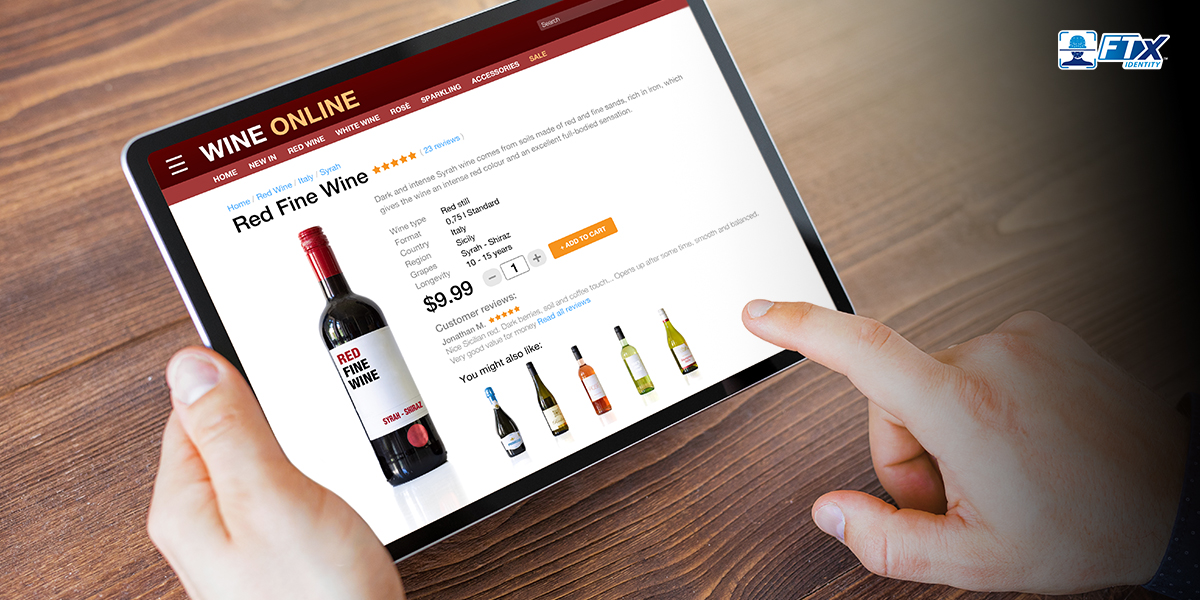A click of a button is all it takes.
If no proper age verification online methods exist, minors can access age-restricted products and content in an instant.
Online age verification systems serve as a sort of superhero on the Internet. They shield minors from being exposed to harmful content or purchasing age-restricted products. Digital age verification also helps age-restricted businesses (like online CBD stores or liquor stores with ecommerce) comply with strict online age verification law, lowering the risk of legal consequences.
You’re probably asking yourself, “How does an online age verification platform work? And how do websites implement age verification on websites?”
Remember, a seamless and secure verification process is crucial for both users and businesses. By prioritizing user experience and compliance, you can ensure a positive and responsible online environment.
We are going to break everything down for you in this guide. Keep reading to learn why an online age verification check matters, common challenges, global regulations, online age verification software methods, and how it works.
The Growing Problem of Online Age Verification
We know running an online store isn’t all smooth sailing, especially when it comes to age verification on websites.
Let’s understand the challenges faced by retailers and how a solid online age verification service like FTx Identity can help you tackle them.
1. Lack of Standardized Regulations
Navigating online age verification law can feel like a maze. With no universal rules, retailers face a patchwork of regional regulations, making compliance tricky.
2. Privacy Concerns and Data Security
Customers want assurance their data is safe during age verification online. Weak online age verification systems risk breaches, eroding trust.
3. High Costs for Small Businesses
For small retailers, implementing online age verification software can seem pricey. Budget constraints shouldn’t compromise compliance.
4. Lack of Real-Time Verification

Slow or outdated online age verification checks frustrate customers and hurt sales. Real-time solutions are a must to keep your checkout flowing.
5. Reliance on Self-Reported Information
Relying on users to input accurate age data is risky and often unreliable. Weak systems let minors slip through.
Why Online Age Verification Matters
Online sales of alcohol and age-restricted products are booming.
In fact, IWSR predicts that by 2024, the market for online alcohol sales will reach $45.5 billion. This growth is leaving businesses susceptible to ineffective online age verification checks.
As per IWSR, “ecommerce sales of alcoholic beverages are forecast to surpass $36 billion by 2028, reflecting a 20% increase in value over the next five years.”
Failing to properly stop and spot fake IDs online can result in lost revenue, lost licenses, and more.
A study in the Health Behavior and Policy Review Journal found that nearly 65% of online alcohol-to-go sales bypassed proper ID checks, highlighting a significant gap in age verification. Legal compliance is one of the most important reasons businesses should consider online age verification software.
Let’s understand further.
1. Legal requirements and compliance
The use of an online age verification platform helps businesses that offer age-restricted products or services comply with online age verification law. It also avoids the risk of legal repercussions should they provide age-restricted content to underage individuals.
2. Protecting minors from inappropriate content
Minors can access inappropriate content online quickly. Using online age verification systems, adult media companies can prevent underage users from accessing harmful content like violence, gambling, etc.
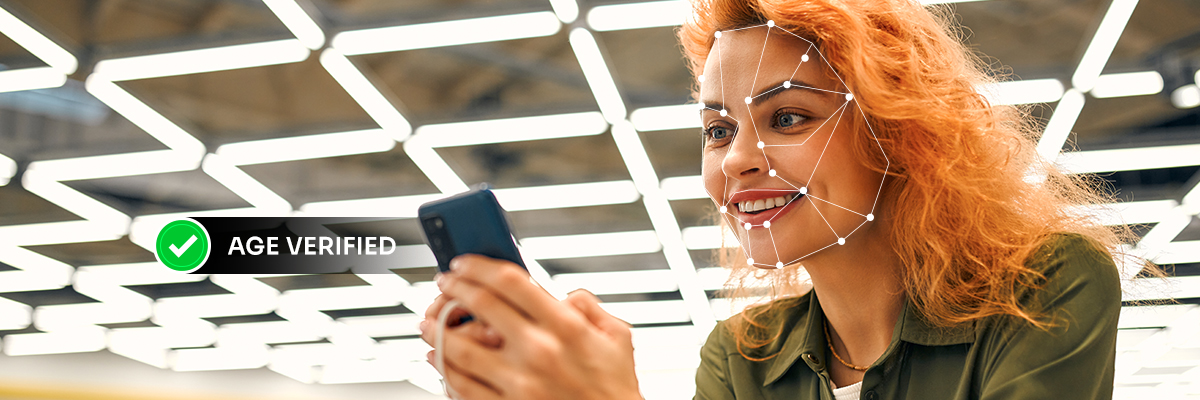
3. Safeguarding online transactions and services
Digital age verification is an important tool for protecting minors from proceeding with age-restricted online purchases. These could include in-app purchases or buying age-restricted products like alcohol or tobacco. In some instances, minors can even bypass age verification on websites if it is not strong enough.
Minors are also an easy target for fraudsters who take advantage of their young age and lack of experience. An online age verification tool makes it more challenging for fraudsters to break through the barrier it provides.
Experience Easy Age Verification — Risk-Free!
Sign up for a free demo of our age verification software and see how it can streamline your sales process.
Global Online Age Verification Regulations
Just like in any physical store, you can’t sell certain goods to just anyone. The rules of the road are defined by online age verification laws, and they’re changing fast.
Here’s a quick tour of the regulatory landscape:
1. US Regulations
The US approach is a bit of a patchwork, but no less serious. While there’s no single federal law, a powerful combo drives the need for age verification online:
COPPA (Children’s Online Privacy Protection Act): This is a big one. It strictly governs how websites and apps collect data from kids under 13. If your platform is geared toward a general audience, you need to know about COPPA.
State-Level Laws: States are leading the charge. Laws like the California Consumer Privacy Act (CCPA) (and its update, the California Privacy Rights Act (CPRA) and the Virginia Consumer Data Protection Act (VCDPA) include provisions for processing minors’ data. More recently, states are enacting specific laws requiring age verification on websites offering adult content or selling age-restricted goods like tobacco and alcohol online. The message is clear: the burden of proof is on you, the retailer.
2. UK Regulations
The UK has taken a particularly firm stance, making robust age verification checks a legal cornerstone.
The Online Safety Act: This is the heavyweight. It legally requires platforms that publish or host pornographic content to implement highly effective age-checking measures to prevent children from accessing it. “Highly effective” is the key term—simple checkboxes won’t cut it.
The Age-Appropriate Design Code (Children’s Code): This code sets standards for online services likely to be accessed by kids, pushing for privacy-by-default settings and transparent age assurance methods.
3. Regulations in Europe
Europe’s framework is arguably the most comprehensive in the world, centered on one landmark rule.
GDPR (General Data Protection Regulation): GDPR is the foundation. It mandates that processing personal data (which includes verifying age) must have a legal basis. For minors, the rules are even stricter. Article 8 states that if a child is under the age of digital consent (which can be 13-16 depending on the member state), you need verifiable parental consent. This makes a secure online age verification service essential for compliance.
Audiovisual Media Services Directive (AVMSD): This directive targets video-sharing platforms, requiring them to put practical measures in place to protect minors from harmful content.
Online Age Verification Methods

There are several electronic identity verification methods available for verifying one’s identity online, including the following:
Biometric Age Verification
Digital age verification through biometric methods uses biological or behavioral characteristics to determine the age of an individual who wishes to access age-restricted online content.
It includes performing the following procedures:
- Facial recognition: This involves analyzing a selfie, a video, or pre-existing camera footage of the user’s face using an online age verification tool. Algorithms assess various facial traits, such as eye shape and skin texture. The selfie is then verified with a database containing recognized faces, ensuring robust age verification on websites.
- Fingerprint scanning: The process involves a user placing their finger on a sensor that detects the unique patterns of ridges, valleys, and other distinguishing features of their fingerprint. The collected fingerprint data is compared to existing records, making it a reliable online age verification check.
Document-Based Age Verification
Document verification is a straightforward approach with an online age verification platform: an individual must provide a valid document to prove their age.
It is usually a driver’s license, a passport, or a national identity card. The online age verification software analyzes the document’s authenticity and extracts specific information, including name, date of birth, and security features like holograms, to name a few.
In some cases, a liveness check is implemented as part of the online age verification service. This process requires the user to provide a selfie or a video, which is then compared to their ID photo to enhance security.
Knowledge-Based Age Verification
Knowledge-based verifications, supported by an online age verification platform, ask the user a series of questions that only the user themselves would know the answer to. In some cases, users are asked basic questions, like their pet’s name or their mother’s maiden name.
For more robust age verification online, complex questions are generated using data collected from public records. Examples include confirming past home addresses, the schools they attended, or the types of vehicles they previously owned, ensuring compliance with online age verification law.
How Online Age Verification Works
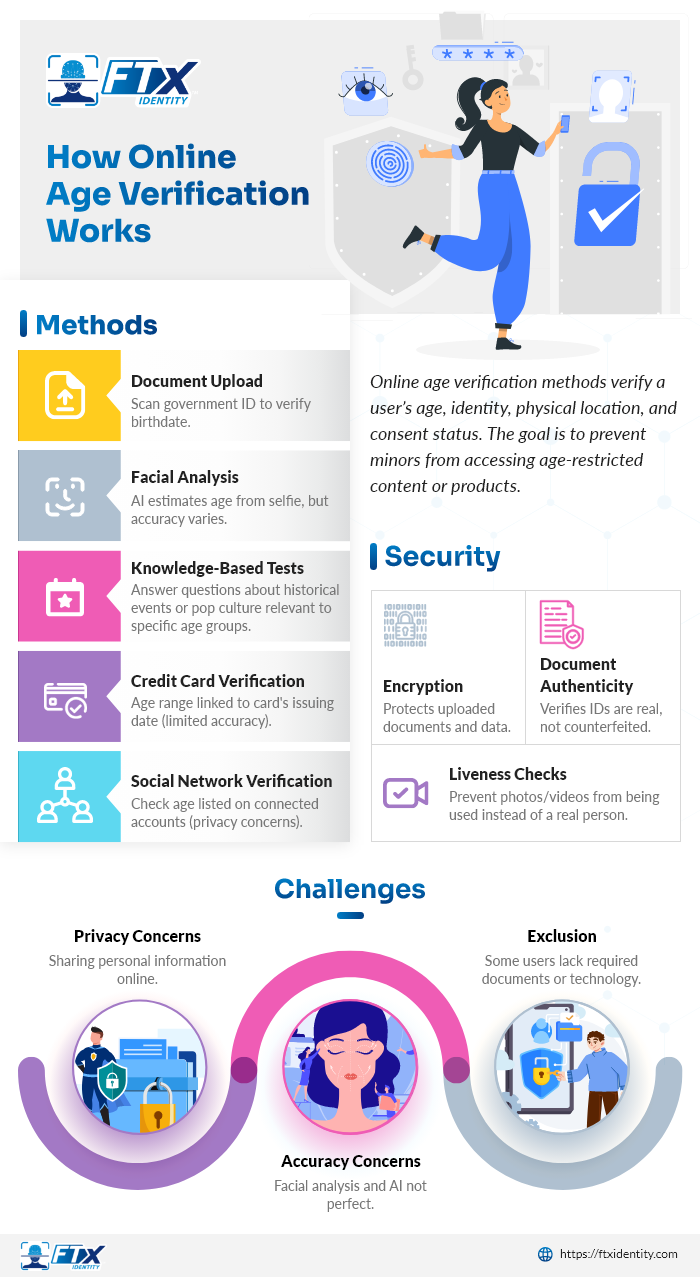
So, how do you actually prove someone’s age without meeting them face-to-face? Modern digital age verification is sophisticated, fast, and privacy conscious.
Here are the most common methods powering today’s online age verification systems:
1. Document Upload
The most straightforward method. Users upload a government-issued ID (passport, driver’s license, or ID card). Advanced online age verification software then uses AI and OCR (Optical Character Recognition) to instantly scan the document, check for tampering or fraud, and extract the date of birth – all without storing the ID itself. It’s the digital equivalent of checking an ID at a bar.
2. Facial Analysis
This is where it gets smart. This method estimates a user’s age by analyzing their facial features via a webcam or smartphone camera. It’s fast and frictionless for the user. Often, it’s used as a first step or in conjunction with other methods for a more robust check. The best systems are designed with privacy in mind, processing the image without storing it.
3. Knowledge-Based Test
This method asks a user a series of challenging questions based on public records information (e.g., “Which of these streets have you lived on?”). The idea is that the questions would be difficult for a minor to answer correctly. However, this method is becoming less favored due to data privacy concerns and the availability of more secure options.
4. Credit Card Verification
A long-standing method based on the assumption that only adults possess a credit card. The system processes a small, temporary transaction (often refunded immediately) to confirm the card’s validity. While simple, it’s not foolproof, as minors can have access to prepaid or parents’ cards, and it doesn’t actually verify the user’s age, just that they have a payment method.
5. Social Network Verification
This method estimates age by analyzing data from a user’s social media profile (with their permission). Given the shifting sands of social media privacy and the inaccuracy of self-reported birthdates on these platforms, this is generally considered a weaker form of verification and is rarely used as a standalone method for high-risk industries.
How FTx Identity Works for Website Age Verification
FTx Identity provides a quick and straightforward online age verification service for helping your ecommerce customers get verified using digital age verification:
- Step 1: Customers can register through the retailer’s app or website using their mobile for age verification online.
- Step 2: Users scan their license, take a live selfie, and their data is cross-referenced with public records to verify their age.
- Step 3: The user then enters a one-time password (OTP) sent via email or short message service (SMS) text.
- Step 4: Once verified, users can now participate in age-restricted brands, ensuring compliance with online age verification law.
Discover how FTx Identity makes online age verification simple and secure.
Add Age Verification to Your Online Store in Minutes!
Our solution seamlessly integrates with popular eCommerce platforms, ensuring compliance without disrupting your checkout flow.
Understanding Online Age Verification Software
For online business owners that sell age-restricted products or content, it’s crucial to implement age verification on websites using reliable online age verification software. Here are some tips for choosing the best online age verification platform:
What to Look for in Software
Start with these questions to evaluate online age verification systems:
- Is it user-friendly for seamless age verification online?
- Is it easy to integrate with existing platforms and systems to support digital age verification?
- Will it provide accurate and precise online age verification checks?
- Does it comply with online age verification laws, such as GDPR and CCPA?
- Does it offer secure data storage and encryption to protect user information in an online age verification service?
- Does it provide strong customer support to assist with the online age verification tool?
With these questions in mind, you can make a wise investment in online age verification software that benefits your business and enhances the satisfaction of users.
Industries That Rely on Robust Age Verification Systems
This isn’t just about avoiding fines. It’s about corporate responsibility and building trust. These industries have the most at stake and are the primary users of enterprise-grade online age verification platforms.
1. Alcohol and Tobacco Sales
The cornerstone of age-restricted sales. Ecommerce platforms selling wine, beer, spirits, or vaping products absolutely must have a verifiable age verification system at checkout to comply with state and federal laws. It’s a non-negotiable part of the digital supply chain.
2. Gambling and Online Gaming
Perhaps the most regulated industry online. From sports betting to online casinos and even loot boxes in video games, proving a user is of legal age is the first and most important step. Regulators are incredibly strict, and platforms must use the most reliable online age verification tools to maintain their licenses.
3. Adult Entertainment and Content
Driven heavily by laws like the UK’s Online Safety Act, this industry is at the forefront of implementing stringent age verification online. The goal is to create a hard barrier between adult content and minors, requiring proven, third-party verification solutions.
4. Pharmaceuticals and Medical Services
Online pharmacies selling age-restricted medications (e.g., acne treatments with strong retinoids, nicotine cessation products, or certain mental health medications) have a duty of care to ensure they are not selling to minors. Age verification checks are a critical part of their prescription safety protocol.
5. Financial Services, Fintech, and Crypto
This is a growing area. Opening a bank account, trading stocks, investing in cryptocurrencies, or taking out a loan are all financial activities restricted to adults. Know Your Customer (KYC) regulations already require identity checks; integrating precise age assurance into that onboarding flow is a natural and necessary step for compliance.
Benefits of Online Age Verification Software
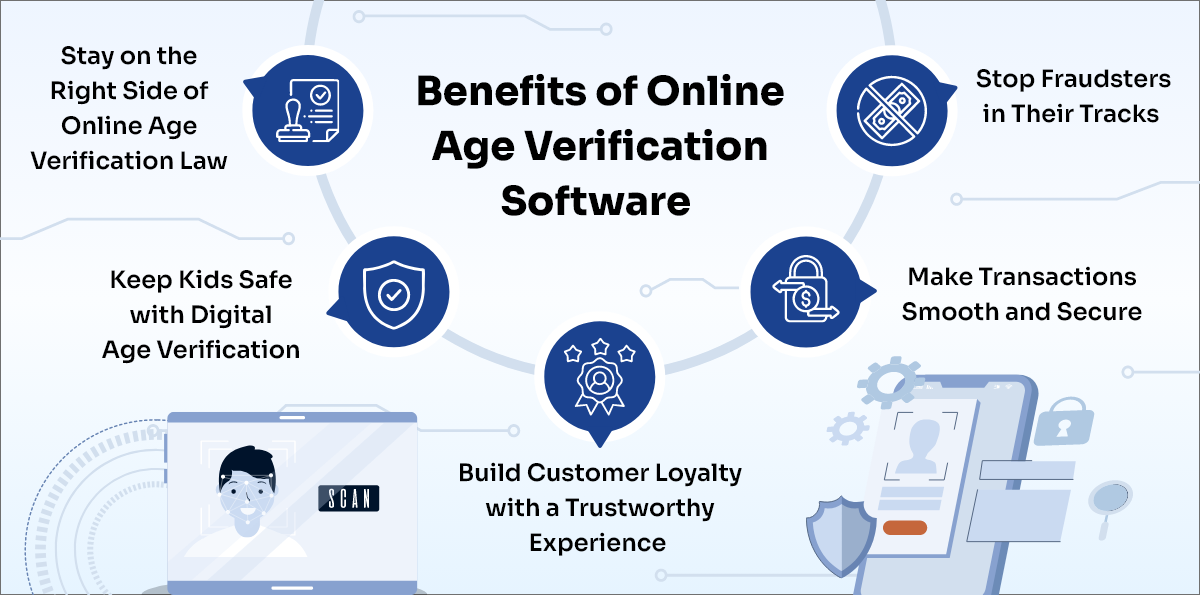
At FTx Identity, we understand that you’re juggling inventory, customer service, and a million other things, all while keeping compliance in check.
That’s where online age verification software swoops in to make your life easier.
1. Stay on the Right Side of Online Age Verification Law
Nobody wants the headache of legal trouble. With age verification on websites, you can confidently meet regulations like GDPR, CCPA, and other online age verification laws. Our online age verification service ensures your shop stays compliant, so you can focus on selling without worrying about fines or penalties for accidentally serving minors.
2. Keep Kids Safe with Digital Age Verification
Online age verification systems act like a digital bouncer, stopping minors from accessing things like adult content, gambling sites, or your online liquor store. With a reliable online age verification tool, you’re creating a safer online space – and that’s something your customers will appreciate.
3. Build Customer Loyalty with a Trustworthy Experience
When you use a solid online age verification platform, you’re showing your customers you care about doing things right. A seamless age verification online process builds trust, making shoppers feel secure knowing their data is safe and your shop follows the rules.
4. Make Transactions Smooth and Secure
Nothing slows down a sale like a clumsy checkout process. Online age verification checks ensure only eligible customers can buy age-restricted items, whether it’s a bottle of wine or an in-app purchase. By integrating online age verification software, you streamline transactions, reduce fraud, and keep underage shoppers from slipping through the cracks.
5. Stop Fraudsters in Their Tracks
Fraud is a pain point for every retailer, but digital age verification makes it tougher for bad actors to game the system. Whether it’s biometric scans or document verification, a robust online age verification system verifies identities with precision, protecting your business from fraud and keeping your operations running smoothly.
Why FTx Identity Is the Best Online Age Verification Service Provider
Our age and identity verification solution is easy to use and saves time. It encompasses seamless age verification, identity management, and a unified login authentication and authorization system.
One-and-Done Verification Magic
The AI-based, multistage verification process allows you to only validate a user’s identity once.
Plug-and-Play Integration
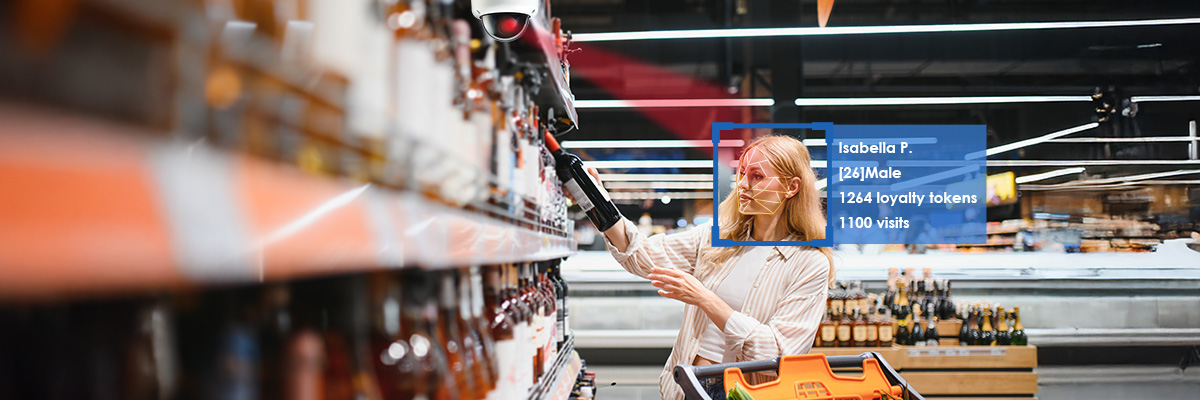
It integrates with your existing POS system
Enterprise-Level Security
The secured, cloud-based digital vault guarantees the safety and privacy of your data. All data is stored in encrypted form, ensuring that only the end user has access to the profile.
Wrapping Up
Online age verification isn’t just a checkbox – it’s the backbone of a safe, private online world, especially for keeping minors out of harm’s way.
As online shopping explodes and ecommerce heats up, retailers like you need bulletproof digital age verification methods to stay ahead.
But it’s not all on you – individuals play a part too, by owning their info and staying savvy online. Together, we’re crafting a secure, trustworthy digital space where everyone wins.
Ready to supercharge your store with one of the leading online age verification providers? Hit us up today for a no-obligation consultation and a live demo of our online age verification service. Let’s chat about how FTx can make your life easier!
Protect Your Store. Grow With Confidence.
Regulations are changing fast. FTx Identity ensures you stay compliant, secure, and one step ahead—no matter what’s next.
